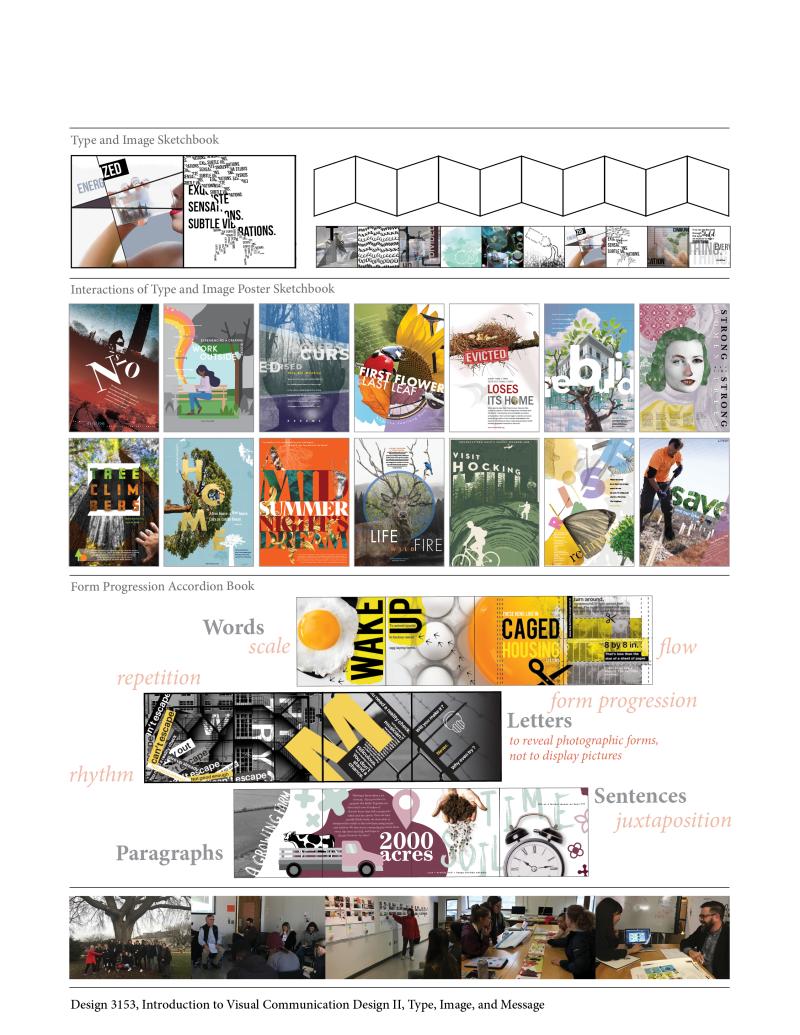DESIGN 3153: Introduction to Visual Communication Design II
Prereq: Enrollment in Visual Communication Design major, or permission of instructor.
Prerequisite: Admission to Bachelor of Science in Design - Visual Communication Design program; or permission of instructor.
Keywords: Type and Image, Image Transformation, Design Composition, Form Relationship, Graphic Space
How do you create type and image compositions that are technically and aesthetically persuasive?
How do you integrate type and image in a form and rhythmic progression?
How do you infuse images with expressive and communicative drive by altering, exaggerating, and combining them to create a new conceptual reality?
How do you develop the ability to critique one’s own work and the work of others based on their intended expression of type, image, and message?
Overview
Objectives
- Create type and image compositions that are technically and aesthetically persuasive
- Practice control of visual variables, visual hierarchy, and depth perception
- Consider form relationships in graphic space through alignment, continuation, proximity, correspondence, and completion
- Integrate type and image in a form and rhythmic progression
- Observe scale change and its impact on different visual effects
- Infuse images with expressive and communicative drive by altering, exaggerating, and combining them to create a new conceptual reality
- Develop the ability to critique one’s own work and the work of others based on their intended expression of type, image, and message
Required Textbook
- Type and Image: The Language of Graphic Design. Philip B. Meggs, New York, NY: John Wiley & Son, Inc. 1992 (ISBN-10: 0471284920)
- Amazon Books (Paperback $20.71 - $ 57.99)
Course Materials
Tools/Software: Illustrator, PhotoShop, InDesign
Course Organization
Sample Coursework
- Assignments and exercises
- Class discussions
- Attendance taken

